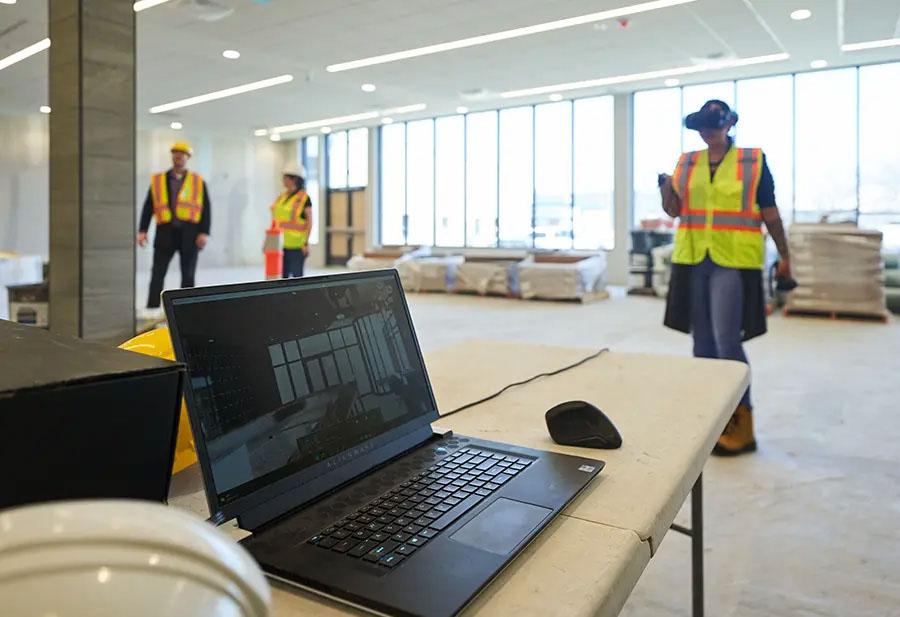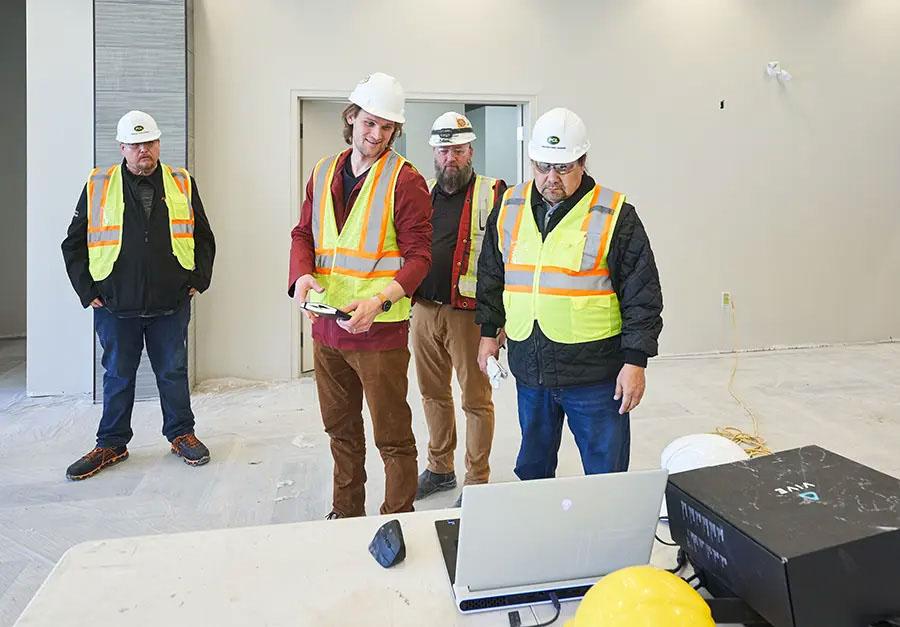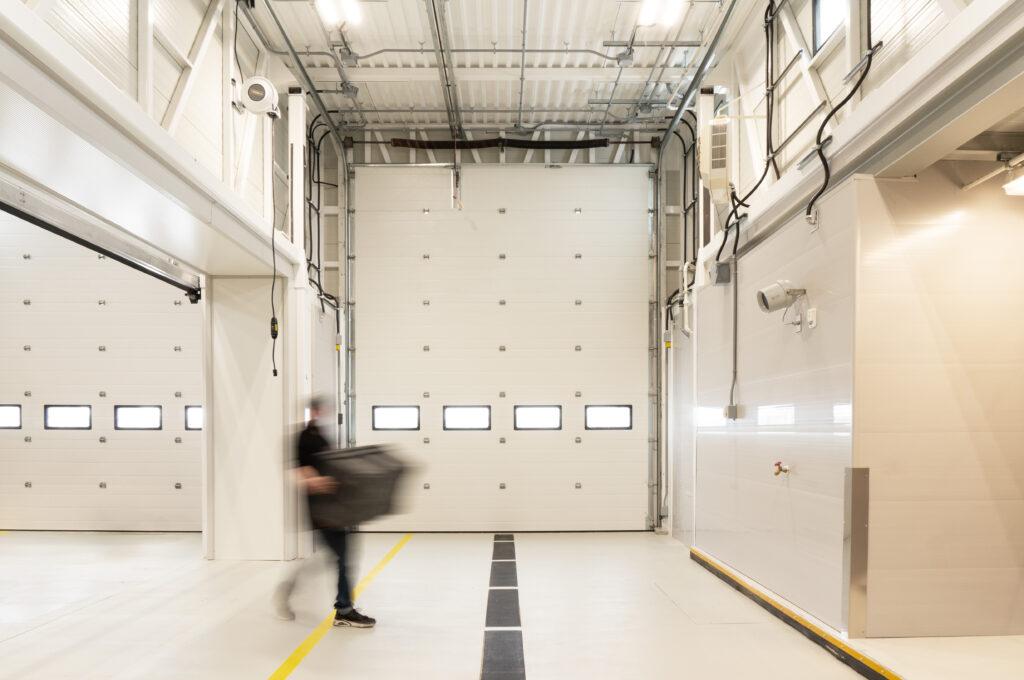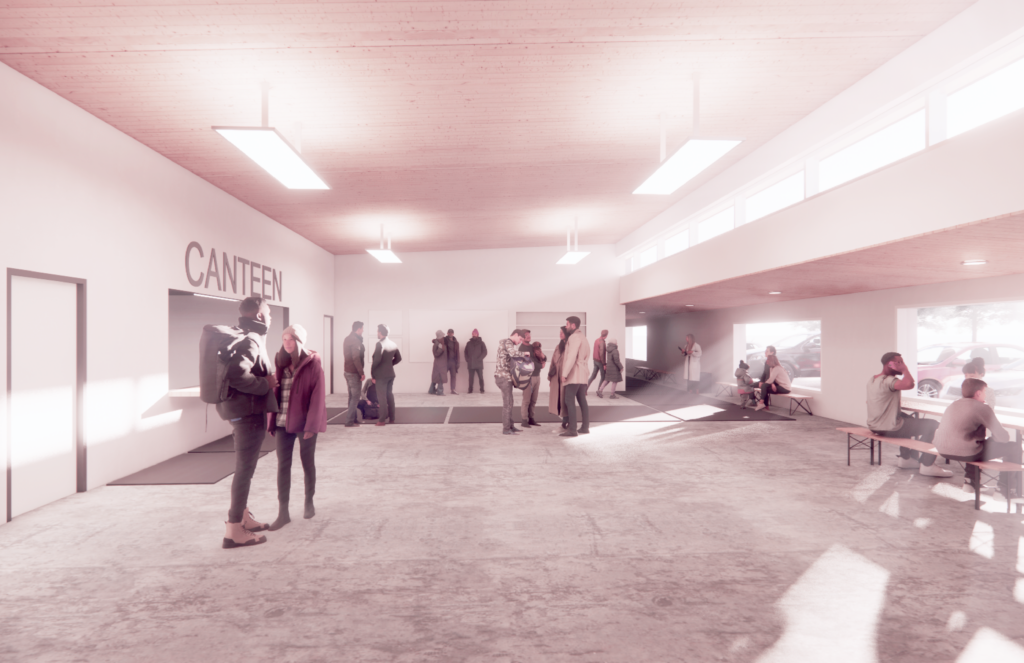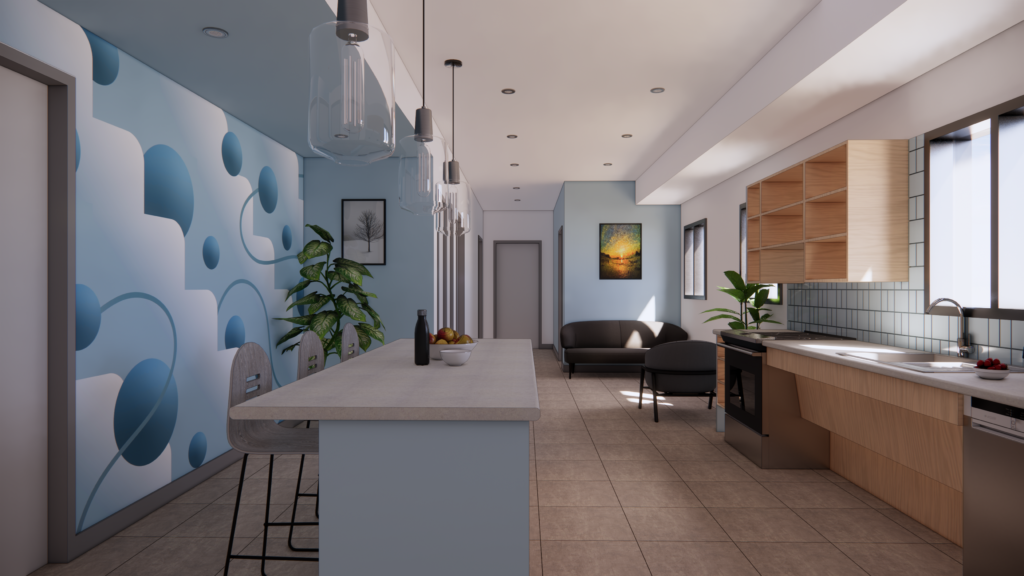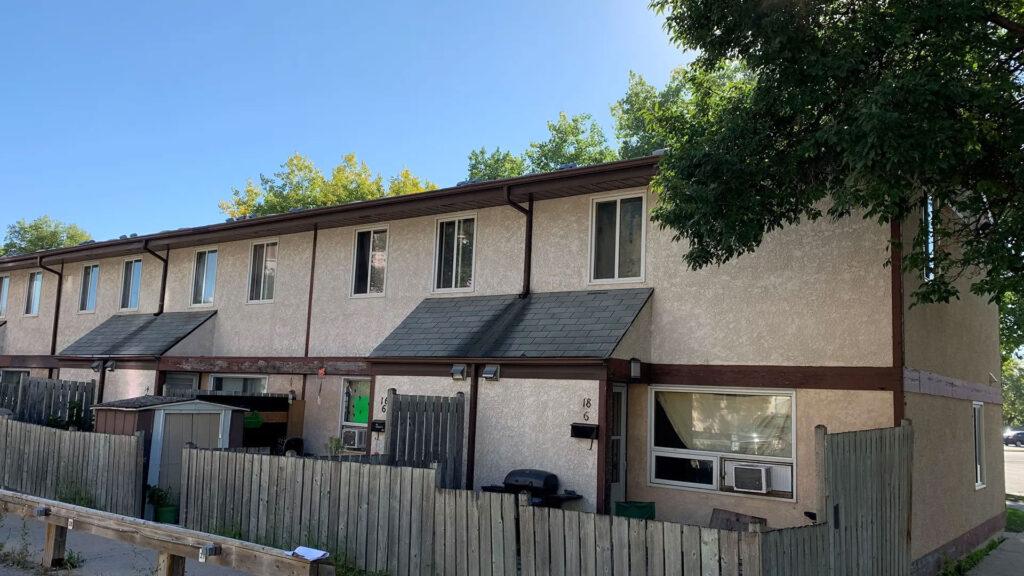Virtual Reality (VR) technology has been making great strides in recent years; one of the areas where it is making a big impact is in the field of architecture. f-BLOK has started to integrate this technology into our design process, as well as for use in client reviews. By creating immersive and interactive virtual environments, we are now able to present and see our designs in a way that was never before possible. In this article, we will explore the ways in which virtual reality is transforming the field of architecture.
Using the information we already develop through our BIM and modeling process, virtual reality headsets allow the wearers to “inhabit” realistic 3D models of the building designs. These models can be viewed from any angle and users can interact with them in real-time. This means that designers at f-BLOK can get a better understanding of how the building will look and function. It’s also possible to make changes and adjustments to the design in real-time, saving a lot of time and money in the long run for the client.
Another benefit of virtual reality in architecture is that it allows us to present our designs to clients and stakeholders in a more engaging and interactive way. We effectively used virtual reality in a recent project, the Ode Akiing Wyndham Garden Hotel Winnipeg Airport. Instead of presenting static images or drawings, we were able to take the client on a virtual tour of the building, allowing them to explore the design in detail. We let them see their new lounge space, including the materials we were proposing and the layout of furniture, and lighting fixtures. This was a big help to the client to better understand the design and the features of the overall space, building a stronger trust and confidence in our abilities. Designers often take for granted the skill of being able to self-visualize a space – virtual reality allows us to bridge that gap for clients.
Virtual reality can also be used to simulate real-world conditions and scenarios. For example, we can create virtual environments that simulate different lighting conditions, evaluate the effectiveness of window patterns, and see how different times of day or year will affect the light entering into a space. This helps to better understand how designs will perform in different conditions, as well as helping to identify potential issues or design flaws before a building is built.
Virtual reality is transforming the field of architecture by allowing architects and designers to create realistic 3D models, present designs in a more engaging way, and simulate real-world conditions. As virtual reality technology continues to improve, we can expect to see even more exciting developments in the field of architecture.

